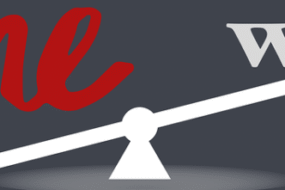Writing a literature review?
Is it time to write a literature review?
What outline do you intend to use?
Writing a literature review is elaborate undertaking.
You sure do require a plan.
Accordingly, you can use a reliable sample of a literature review outline as a guide and a plan.
Literature Review Approaches
When writing a literature review, a sample of a literature review outline comes in handy.
Note that any sample of a literature review outline to use is founded on a specific approach.
Therefore, before you begin the actual writing, you need to first understand the different literature review approaches you could adopt.
These approaches are literally guides on how to write a literature review.
They include:
Chronological Approach
The chronological approach demands that you present topics or themes in a chronological order.
In this, you should identify a clear path through which research advanced and present the trend in a sequential order of development.
The approach puts forward each work/topic based on when they were published or established, with the earliest one appearing first.
For instance, it could focus on works, events, or phenomenon occurring in different decades or periods usually with a form of a timescale.
Thematic Approach
This is another major approach that can be seen in a typical sample of a literature review outline.
It focuses on a topic or theme, where you usually expound on the topic or theme in relation to the phenomenon under study.
The approach requires you to examine different views and subtopics on the theme or topic.
It is more suitable when you intend to develop a centered review.
Methodological Approach
Although not commonly used, you can adopt the methodological approach in your literature review.
The approach usually pays emphasis on the research methods instead of the research outcomes.
You should focus on how the results were arrived at.
The approach is considered more suitable when you intend to inform debate, improve research practice, and identify gaps in practice.
Theoretical Approach
The theoretical approach is also popular in any common sample of a literature review outline.
Following this outline, you should explore the different theories that explicate on the phenomenon under study with the aim of acquiring a better understanding of the study under question as well as justifying the current study.
The approach is most suitable when you want to center your study on numerous theories or hypothetical outcomes linked to the literature being complied.
Structure of a Literature Review
Structure is important in all literature review templates.
As illustrated in a conventional sample of a literature review outline, such structure encompasses three key parts, including:
1. Introduction
2. Body and
3. Conclusion
Introduction
The introduction clearly presents the purpose and focus of the literature review.
In extensive works like dissertations, thesis, or proposals, the introduction should restate the problem under study or the research question being explored.
It should as well provide a brief summary of the research context.
Besides the research problem, you can highlight gaps in present literature, as well as provide the timelines of the topic.
The introduction should be brief and precise.
Body
The body is very critical in any sample of a literature review outline.
It is the meat of the literature review.
Usually, it is divided in numerous subsections that are all tied to the research phenomenon under study.
Each theme or related topic should be explored in a distinctive heading with a specific subheading.
Writing the body should adhere to some rules, including:
1. Analyzing and interpreting the content
In this, you should go beyond paraphrasing works by other authors.
Instead, you should develop interpretations derived and discuss the findings’ significance within the context of the literature review.
2. Synthesizing and summarizing the content
Points from the literature review should be processed to create one narrative in a summarized manner.
3. Structuring the literature review
For this rule, you should appropriately structure the literature review.
It is important to have topic sentences for each of the paragraphs, transitions, compare and contrast sentences, and draw connections.
4. Evaluating critically
It is necessary to examine the content and sources used when compiling the literature review.
In doing this, you should look into the strengths and weaknesses of the sources.
Conclusion
This is the last part in any sample of a literature review outline.
It includes a summary of the key findings derived from the literature review.
The summary should consider all the themes explored and their significance within the broader context of the literature review and phenomenon under study.
Just like the introduction, it should be brief and precise.
Outline of Literature Review
Developing an outline is a critical step when it comes to how to write a literature review.
Although sometimes overlooked, it is the most effective approach in organizing the literature review- it ensures that all the relevant points are included.
Any good sample of a literature review outline must include all the themes relating to the phenomenon under study.
Note that the outline also makes it easier and faster to compile your literature review.
Above noted, the outline of a literature review could be as illustrated below:
Introduction
a. Explain the topic under investigation, and it is significant to the field.
b. Provide the literature’s “big picture”.
c. Give an argument or thesis statement- reason why it’s necessary to study the topic.
Theme A
a. Overview: Provide an overview of the theme’s characteristics, including nuances, commonalities, and differences.
b. Sub-theme: Develop a narrow but congregated findings about the theme.
i. Study 1: Explore the research questions, methods, sample, and related findings.
ii. Study 2: Explore the research questions, methods, sample, and related findings.
iii. Study 3: Explore the research questions, methods, sample, and related findings.
iv. Examine whether and what nuances, commonalities, and differences these studies share.
c. Sub-theme: Develop a narrow but congregated findings about the theme.
i. Study 1: Explore the research questions, methods, sample, and related findings.
ii. Study 2: Explore the research questions, methods, sample, and related findings.
iii. Study 3: Explore the research questions, methods, sample, and related findings.
iv. Examine whether and what nuances, commonalities, and differences these studies share.
d. Repeat the above with the other sub-themes.
Theme B
Follow what has been done with Theme A.
Repeat the above with the other themes.
Conclusion
Conduct a critique or evaluation of the existing literature.
i. Examine the contributions of the compiled literature to the field.
ii. Reconcile the literature review with the thesis statement.
iii. Examine the literature’s general strengths.
iv. Examine the literature’s general weaknesses.
v. Identify what is missing, if there is.
vi. Look at what should be the next steps for research, with the aim of addressing or building on gaps, weaknesses, or strengths.
Sample of a Literature Review Outline
A good sample of a literature review outline should be follows:
Introduction (already written)
i. Knowledge management and competitiveness followed by Introduction’s structure.
ii. Research Question: What are the impacts of human resource practices on oil and gas companies?
iii. Oil and gas companies need to align their human resource practices to remain competitive in the increasingly dynamic market.
Literature Review
Theme 1: Employee and Labor Relations
a. Overview of the characteristics of the theme
b. Sub-theme 1: Employee Relations with Employers
i. Study 1
In a qualitative study examining US gas and oil employees, Schneider (2019) observed that participants….
ii. Study 2
In another study conducted on Saudi Arabian oil and gas companies, Boyle (2020) established that…The study was conducted in 3 different oil and gas drilling sites, which may be reflected in the different responses.
c. Sub-theme 2: Employee Rights and Unionization
i. Study 1
ii. Study 2
d. Sub-theme 3: Employee Harassment and Abuse
Theme 2: Employee Staffing
a. Overview of the characteristics of the theme
b. Sub-theme 1: Talent Needs Identification
i. Study 1
ii. Study 2
c. Sub-theme 2: Contract Renewal and Termination
d. Sub-theme 3: Use of Technologies in Recruitment
Theme 3: Employee Development
a. Overview of the characteristics of the theme
b. Sub-theme 1: Preparation of New Employees
c. Sub-theme 2: Training Opportunities
Theme 4: Employee Compensation
Theme 5: Employee Safety and Health









